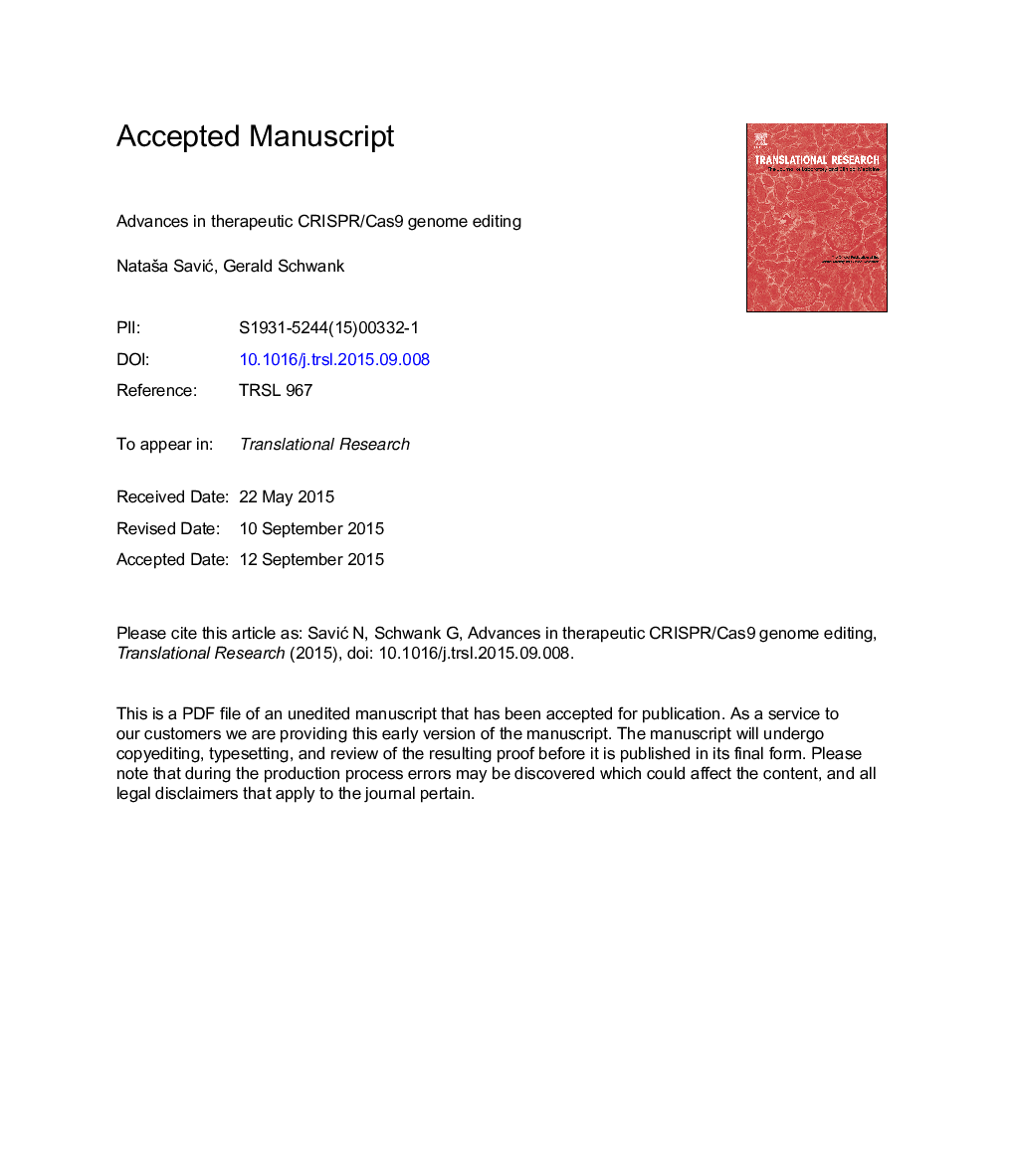| Article ID | Journal | Published Year | Pages | File Type |
|---|---|---|---|---|
| 6155882 | Translational Research | 2016 | 17 Pages |
Abstract
Targeted nucleases are widely used as tools for genome editing. Two years ago the clustered regularly interspaced short palindromic repeat (CRISPR)-associated Cas9 nuclease was used for the first time, and since then has largely revolutionized the field. The tremendous success of the CRISPR/Cas9 genome editing tool is powered by the ease design principle of the guide RNA that targets Cas9 to the desired DNA locus, and by the high specificity and efficiency of CRISPR/Cas9-generated DNA breaks. Several studies recently used CRISPR/Cas9 to successfully modulate disease-causing alleles in vivo in animal models and ex vivo in somatic and induced pluripotent stem cells, raising hope for therapeutic genome editing in the clinics. In this review, we will summarize and discuss such preclinical CRISPR/Cas9 gene therapy reports.
Keywords
Cas9LTRsTALENstracrRNAPCSK9cccDNACCR5DMDDSBsCRISPR RNAIPSCsCFTRLDL-CCRISPR-associated protein 9NHEJHDRcrRNAcovalently closed circular DNAHSPCszinc finger nucleasessingle guide RNAsgRNAHomology-directed repairclustered regularly interspaced short palindromic repeatsLong terminal repeatsDuchenne muscular dystrophytranscription activator-like effector nucleasescystic fibrosis transmembrane conductance regulatorhematopoietic stem and progenitor cellsInduced pluripotent stem cellsdouble-strand breaksFahfumarylacetoacetate hydrolaseIndelsHBVHIVhuman immunodeficiency virushepatitis B virusProprotein convertase subtilisin/kexin type 9Nonhomologous end joiningLow-density lipoprotein cholesterolChemokine Receptor 5
Related Topics
Health Sciences
Medicine and Dentistry
Medicine and Dentistry (General)
Authors
NataÅ¡a SaviÄ, Gerald Schwank,
